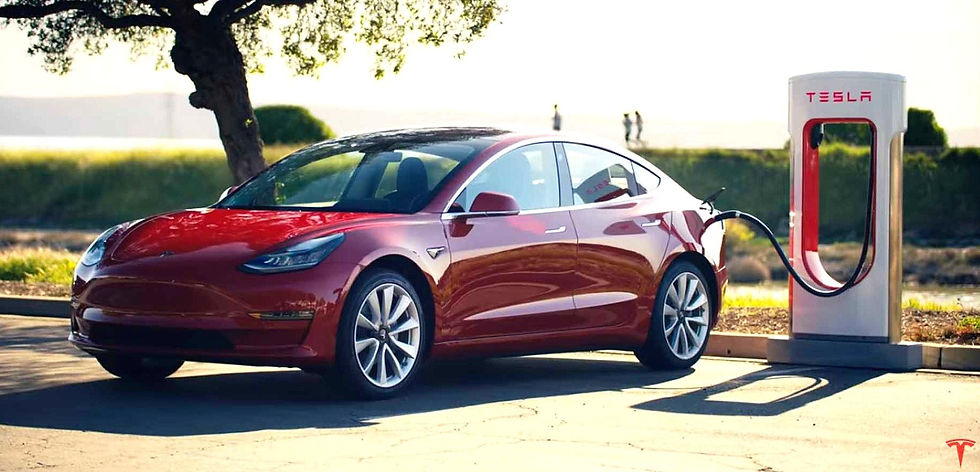Sustainability In Automotive Industry
- Güney Baver Gürbüz
- 5 Nis 2021
- 4 dakikada okunur
Güncelleme tarihi: 2 May 2021
With developing technologies and needs, car companies are beginning to make themselves more sustainable each day. Ford, as always, is one of the pioneers in this sustainability for their production. Like other automakers, Ford has been getting more comfortable with additive manufacturing on their vehicle; the Ford team announced its partnership with 3D printer manufacturer HP to recycle 3D printing waste into end-use automotive parts last month. If you haven’t checked our article about 3D printing, click here to enlarge your knowledge in this area. 3D printing allows companies to produce quality but cheap products that would otherwise be too expensive due to their cost.

Ford, by using the wastes of these products has reached a different level. This process not only gives a profitable benefit to the company but also promises a better environment. Ford, working with HP has commenced recycling 3D printed parts and powder by using the plastic to make fuel clips for the F-250 truck. The process starts with the waste plastics being sent to a company called Lavergne that turns them into plastic pellets that can then be used in injection molding machines. Those pellets are then used by Ford to make the fuel clips. However, the methodology of this process and the companies’ engineering in this collaboration are essential and comprehensive.
HP’s MJF 3D printers are already designed for high material efficiency, where powder use is minimized and excess material is often reused in future construction. Ford's own Advanced Manufacturing Center posses a decent quantity of these MJF 3D printers, and the research team there tried to take the sustainability game to the next level and developed a "zero waste" application for the future. This isn’t to say that the used waste material is only the consequence of Ford’s endeavor as the dental company SmileDirectClub is also helping out by collecting its redundant 3D printed dental molds for Ford to use. Impressively, SmileDirectClub operates the largest HP 3D printing facility in the U.S, producing more than 30,000 dental aligners every day. It would be palatable to see Ford’s determination behind its sustainability goals is huge as they are working with the biggest companies in their areas.
Ford also works with the Resin manufacturer Lavergne to recycles its molds and waste powders into polymer pellets, which are suitable for the injection molding process. Those pellets are then used by engineering company ARaymond to make the fuel clips for the F-250. Ford claims that the fuel clips made from this recycled printer waste are more resistant to chemicals and moisture, as well as being 7 percent lighter and 10 percent cheaper than the clips it has been using until now. So, one can easily claim that Ford, with this process, benefited both quantitatively and qualitatively. Debbie Milewski, technical leader of Ford's plastics research group stated “Finding new ways to work with sustainable materials, reducing waste, and leading the development of the circular economy are passions at Ford”. Ford, with its partners, has already identified at least ten other suitable fuel-line clips on companies’ other vehicles and working to engineer these injection moldings into other usable products. This actually shows how Ford’s actions intersect with its ambitious climate change goals which include becoming completely carbon neutral by the year 2050. In fact, additive manufacturing in the automotive industry has already gained momentum as several major manufacturers are now using this technology in their daily operations. Ford, in addition to these operations, recently became the first carmaker to add Formlabs’ Form 3L 3D printer to its fleet. The company will use Form 3L to 3D print plastic caps for vacuum tests, which are used to find engine leaks.

Last month, German manufacturer Audi also began using 3D printing to produce hot form tooling at its Metal 3D Printing Centre in Ingolstadt. Leveraging the industrial power of EOS 3D printing systems, the company is now able to produce twelve different segments of four hot forming tools at its facility which are later used to assemble car models such as the A4 saloon. Elsewhere, in motorsport, the Alfa Romeo Racing Formula 1 team recently doubled the use of 3D-printed parts in the C41 race car. Lightweight components are expected to provide significant performance considering the current expenditure limitations implemented by FIA as the team quickly created lightweight components that cost around 90% less than those produced by conventional machining.
With the technologies developing, Automobile industries strive to become more efficient while following sustainable development goals which are essential for the maintenance of the globe. By doing so, most of the companies are beginning to have positive repercussions on a much wider scale, boosting their economy while leaving a positive impact on our environment.
-Güney Baver Gürbüz
References:
“We Make Plastic Circular®.” Lavergne, 31 Mar. 2021, lavergne.ca/.
“HP & Ford Team to Recycle 3D Printed Waste into Car Parts - 3DPrint.Com: The Voice of 3D Printing / Additive Manufacturing.” 3DPrint.Com | The Voice of 3D Printing / Additive Manufacturing, 26 Mar. 2021, 3dprint.com/280152/hp-ford-team-up-for-sustainability-in-automotive-3d-printing/.
Leading a Sustainable Revolution: Ford and HP Collaborate to Transform 3D Waste into Auto Parts, an Industry First | Ford Media Center, media.ford.com/content/fordmedia/fna/us/en/news/2021/03/25/leading-a-sustainable-revolution.html. 






Yorumlar